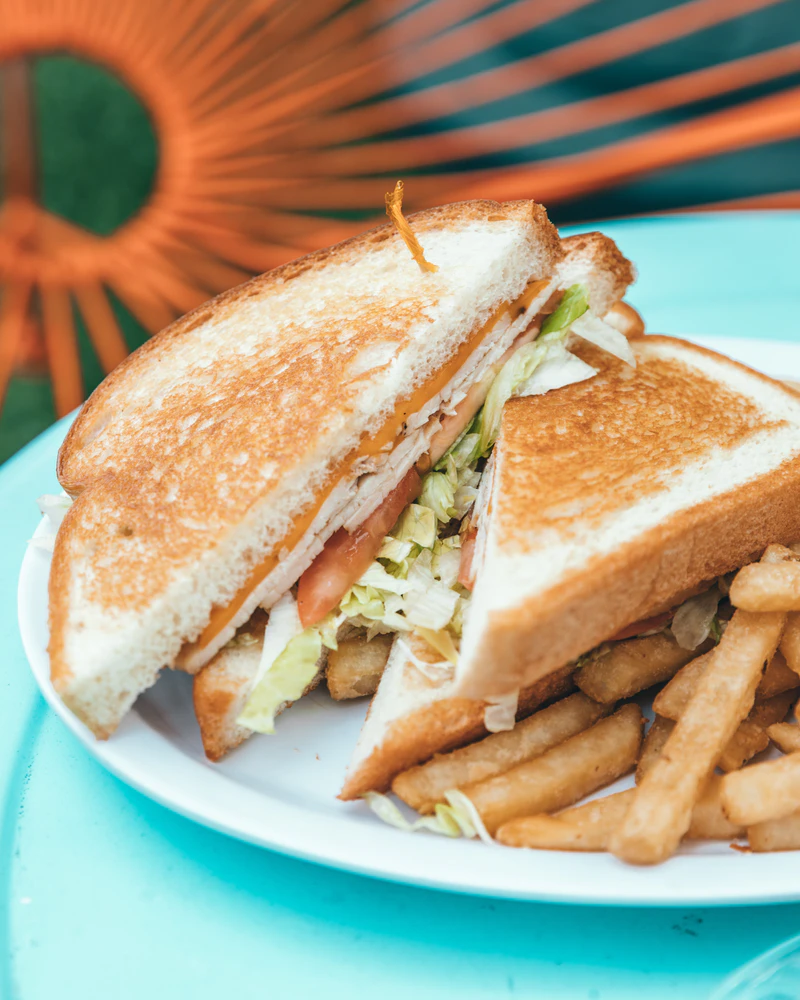The restaurant business is fairly straightforward – you make money from the food you sell. So unless you have priced your restaurant menu smartly, it is quite difficult to make a healthy profit. Most wannabe restaurateurs feel pricing a menu doesn’t need a deep understanding of costing and instead go with gut feel, approximation, and intuition. This explains why they start looking for “pricing strategies for restaurants” on the web only when they see their business generating negligible profits.

Agreed, you don’t need a crash course to price a menu but you do need a fair understanding of restaurant pricing strategies to be able to ensure your business doesn’t become a loss-making machine. In this blog, we will explore some of the most widely used pricing strategies in the restaurant industry along with some pricing trends that have become popular in recent times.
To start with, get a clear understanding of your food costs and operational costs. Why, you may ask? Because your pricing heavily depends on what you end up spending in creating a menu item and the type of restaurant you are running. For example, you cannot run a cafe with prices that an upscale fine dine restaurant charges.
Food costs vary from restaurant to restaurant but on an average, they are between 25-40% of your sales. Once you have the food cost percentage, you can do a 3x to 4x of your cost price to get the selling price of a menu item. You can calculate food cost percentage with the following formula or just use a restaurant management software to give you accurate numbers.
Opening Inventory + Purchase – Closing inventory = COGS
COGS/Sales = COGS %
Pricing Strategies For Restaurants:
1. Choose pricing as per your restaurant concept:
To sustain and make profits in an already saturated industry, it is vital to have a niche that allows you to impress your customers. Your niche is a particular cuisine, type of food, or concept that you excel at and that helps you stand out from your competitors. Think of it this way: if there are thousands of restaurants serving the exact same thing, it can get challenging to distinguish yourself and find success.
Taking into account your restaurant concept (cafe, brewery, bistro, upscale dining, sports bar, etc), your niche, and your key demographics, you can identify your overheads and price your menu accordingly. This means an upscale dining restaurant will have to mark up their prices higher since they have higher overheads and need to cover a lot of grounds in order to ensure they make decent profits.
Ideally, you should aim to be known for one/two special menu items. This menu item, although a common dish, should have something exclusive that makes it irresistible and sets you apart from other restaurants serving the same dish. For example, Windmills Craftworks in Bangalore has Windmills Baby Pork Ribs as a special item on their menu where their pork ribs are imported from Germany. This allows them to serve something distinctive & charge extra for it.
2. Size up your competition:
One of the easiest pricing strategies in the restaurant industry is studying the competition in the area your restaurant is located. Before starting your restaurant, visit similar kinds of restaurants in the area and evaluate their pricing for the dishes you intend to have on your menu. You can pick a section and average out the cost to see how they have marked up their prices.
Although it is recommended to create something unique and not offer exactly what the competitors are offering, you need to understand how your prices will be perceived by the customer. This is called value-based pricing in restaurants where the menu is priced based on what the guests perceive as an appropriate price for a menu item.
3. Balance the price with the quantity:

A great food and bar menu pricing strategy is to have a good hold on portion control. I recently visited a popular rooftop restaurant with prices on the upper side for something as basic as french fries. When I ordered their special french fries, I expected them to have something unique that would justify the pricing.
To my dismay, it was regular fries, just the portion was for 4 people. Since it was only 2 of us dining, this not only led to wastage but also made us feel we overspent on a menu item that didn’t deserve to be priced that high. The ideal way would have been to serve portions for 2, serve it with cheese and some unique seasoning, and charge the same amount.
Alternatively, using a relative pricing strategy would have also worked well. For instance, they could have listed Regular French Fries, Cheesy French Fries, and Special French Fries and priced them in ascending order. Regular french fries usually take minimum investment and have a high-profit margin. So with relative pricing, the restaurant could increase its sales.
4. Carefully curate the content:
Describing menu items is a very underrated strategy that helps in increasing the chances of a menu item getting ordered. You can spice up your menu by adding descriptions for each menu item that compel the guests to try them out. While keeping the descriptions short and crisp, focus on involving the senses of the reader.
Well-written descriptions can make your dish sound appealing and reduce the ordering time. For instance, you can describe Arrabiata pasta as “cooked in Olive oil and covered in a creamy tangy sauce made from sun-dried tomatoes, garlic, & dried red chili peppers”. Using sensory words like these is a clever strategy used to highlight a high-contribution margin menu item.
5. Layer your expensive items:
When pricing a menu, most restaurateurs club high-value items together and cheaper items together separately. This prevents most guests from picking anything from the high-value list. If you have your high-contribution margin items in the high-value list, you are going to miss out on getting orders for those and reduce your profits drastically.
The key is to find the right balance by layering the expensive items between the cheaper ones so your menu is optimized to offer a good mix of both. At the same time, you can slightly reduce the portion size of the high-value menu item to bring the price down and create a better balance of pricing in the menu.
6. Understand your most loyal customers:
Over time, every restaurant starts to understand what their customers like the most in their menu. This is very easy if you regularly seek customer advice and study the orders being received each day. You will also become aware of what kind of customers you are attracting. Based on this information, you can revamp your strategy to benefit your restaurant.
For instance, if you notice your most loyal customers are young working millennials, you can tweak your restaurant’s services and prices to attract a similar kind of clientele. Since you already have a successful strategy to retain a particular type of customer, build on that and evolve your menu to ensure it attracts similar customers.
7. Let go of the currency symbol:
How you present the price of a menu item has a significant psychological effect on the amount a guest ends up spending in your restaurant. A study done at Cornell University by Sheryl E. Kimes, Sybil S. Yang, and Mauro M. Sessarego showed that when the currency sign was used next to a number on the menu, people ended up thinking a lot and ordering less.
For instance, writing just 11 instead of $11 or 11 dollars or Eleven dollars in front of a pizza showed that the guests spent more on that item. This is because looking at the currency mentioned in front of the number made them feel guilty about the amount they were spending. This strategy is especially helpful for fine dining restaurants that charge on the upper side.
8. Highlight your high-profit margin items:
A profitable restaurant pricing strategy requires a very clear understanding of your strengths so you can leverage them to your advantage. Find the most successful items that are highly liked and ordered and give you a high profit. Highlight them well by calling them the Chef’s special and describe it in greater detail.
To ensure your customers know this is your best work, create a menu design that has lots of space dedicated to this item so it doesn’t miss the customer’s eye. Use a classy font that makes it easy to read yet portrays a premium experience. Having a successful menu item presented well increases the chances of customers opting for it.
9. Keep food price surges in mind:
To ensure your menu doesn’t become the cause of your losses, you need to keep an eye on the fluctuations in food prices. These changes in prices of raw materials could be attributed to a lot of factors like limited crop growth, natural disasters, or lack of suppliers in the area. As a restaurant owner, ignoring this could lead to a lot of losses.
To combat this, always price your menu with a buffer included for the SKUs that have a record of experiencing surge pricing. This prevents you from incurring huge losses or having to change prices frequently & disappointing customers with different prices on each visit. Make sure the menu price is high enough to save you from losses during surge periods but not so high that it discourages a customer from ordering that item.
10. Offer combo discounts:
Bundling items together to increase their sales is a classic pricing strategy that guarantees good profits. A good example of this would be McDonald’s pricing strategy that clubs different items and calls them “meals” or “combos” with a price lower than the original price of the individual item.

This entices the guests to order a combo instead of opting for the solo menu item. In most cases, there is one high contribution margin item that helps in keeping the profit high despite the reduced combo price. A lot of restaurants reduce the portion size slightly in the combo to compensate for the lower price which further increases their profits.
11. Offer customization:
Another great pricing strategy is to offer customizations where customers can choose how they want a menu item to be made and what all they would like to be included in it. This strategy allows them to have full control over the final outcome and pricing of the dish.
For e.g. MyFroyoLand serves frozen yogurt where customers have the option to customize it as per their liking. It allows you to come & choose your ice-cream flavors and toppings and include as many or as little numbers of items you like. The final price differs based on the weight of the entire item.
Conclusion:
These are the most commonly implemented pricing strategies in the restaurant industry. While there is no secret formula to a successful menu, you can hit the sweet spot between customer favorites and high-profit items by regularly analyzing your menu. Moreover, you need to keep evaluating your menu at regular intervals to identify the high-profit items and highly ordered items to understand what your customers value. This also brings to light those items that have very little to no audience. Removing them from the menu and discontinuing their production is also a great strategy to ensure you have a high-yield menu and reduced SKUs.
Interested to increase your restaurant profitability with data driven restaurant management tools?
